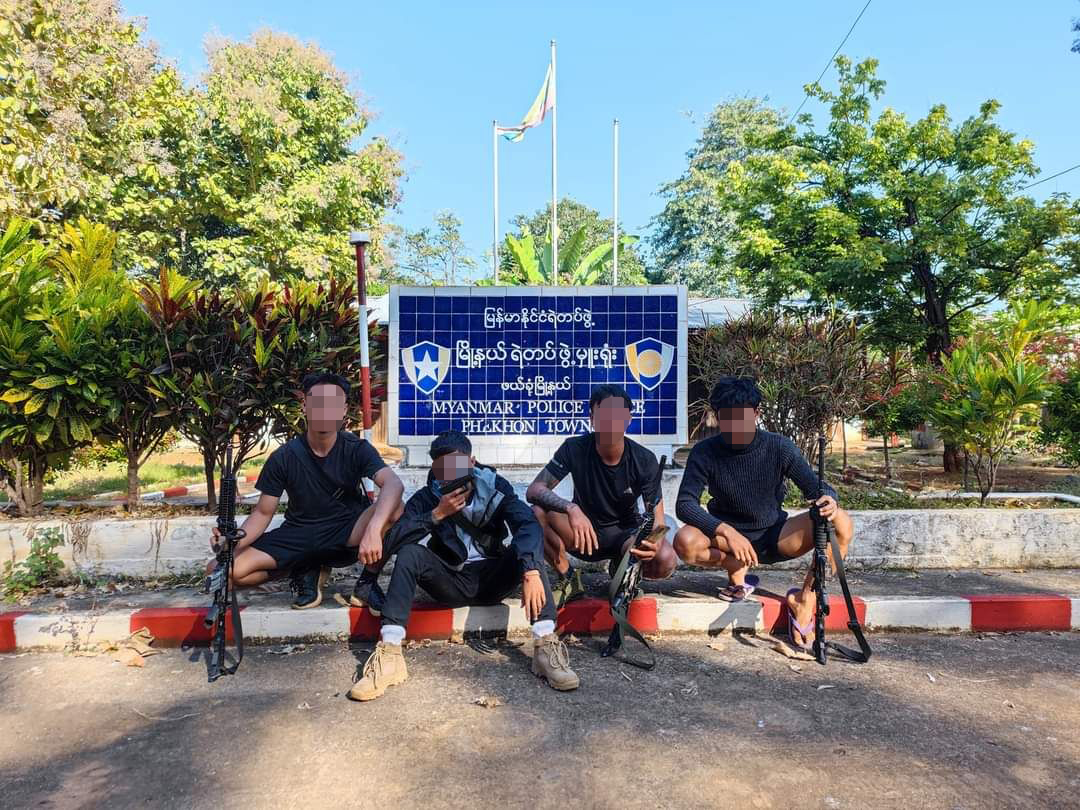Most of Pekon in southern Shan State is now under the control of resistance forces after a series of attacks against junta targets in the town.
On Jan. 7, joint resistance forces from Karenni (Kayah) State launched an offensive targeting Pekon across the state border in Shan as part of Operation 1111, which was launched two months ago. The Pekon offensive has been successful, with resistance forces seizing a number of junta offices within a week, the resistance groups said.
Karenni resistance forces have been carrying out Operation 1111 since Nov. 11 in Karenni State’s Loikaw and Demoso townships and neighboring Pekon, where there is a high concentration of ethnic Karenni people.
Within two months, the resistance forces have made impressive gains, taking control of most of Karenni State and part of the capital, Loikaw.
Karenni Nationalities Defense Force (KNDF) secretary and deputy commander-in-chief Marwi said in an exclusive interview with The Irrawaddy in late November that since the launch of Operation 1111, joint resistance forces had managed to take control of 80 percent of Karenni.
Colonel Hphone Naing, the adjutant-general of the Karenni Army (KA), told The Irrawaddy on Thursday that the joint Karenni resistance forces had seized the police station, state administrative office and governmental offices in Pekon on Jan. 8.
During the Pekon offensive, the joint forces also gained control of a Myanmar military outpost near the town.
Local media reported that almost 20 military soldiers were killed during the operation, but colonel Hpone Naing said the exact death toll was not yet known.
Pekon is a crucial town for the Myanmar junta from a military perspective, as many Myanmar junta regiments, supply units and infantry battalions are based there, Ko Banyar, deputy secretary-2 of the Interim Executive Council (IEC), which serves as the interim state government for Karenni State, told The Irrawaddy.

Located about 40 km from Loikaw, the capital of Karenni State—which is partly under the control of the KNDF—Pekon is also home to Myanmar Military Operations Command Nos. 2 and 7. It is only about 180 km from the junta’s administrative capital Naypyitaw, which can be reached by car in a little over four hours.
Junta fighter jets dropped bombs on Pekon six times on Monday, as the battle between the resistance forces and junta soldiers intensified. No information on civilian casualties was yet available.
Over two-thirds of the population of Pekon has left the town for the nearest shelter since the morning of Jan. 7, and now fewer than 10,000 residents remain. According to the IEC, Pekon had an estimated population of almost 40,000 before the war.
“In Karenni State, clashes occur every day in Demoso, Hpruso and Loikaw. Since the beginning of Operation 1111, we have been fighting continuously in Pekon, Moe Bye and Loikaw, seizing Moe Bye and Shwe Pyi Aye. Pekon is very important for the junta strategically,” Ko Banyar said.
Following the intense battles in Karenni State, the number of internally displaced persons in the area has risen.
According to a report published by the Karenni Human Rights Group (KnHRG) on Jan. 11, at least 280,000 of Karenni State’s 300,000 residents have been displaced since the Feb. 1, 2021 coup.
“We are ready to fight till the end. And we need the support of our people. Sooner or later, we will reach our destination. Stay strong for that moment”, Ko Banyar told The Irrawaddy on the day marking two months since the launch of Operation 1111 in Karenni State.

















